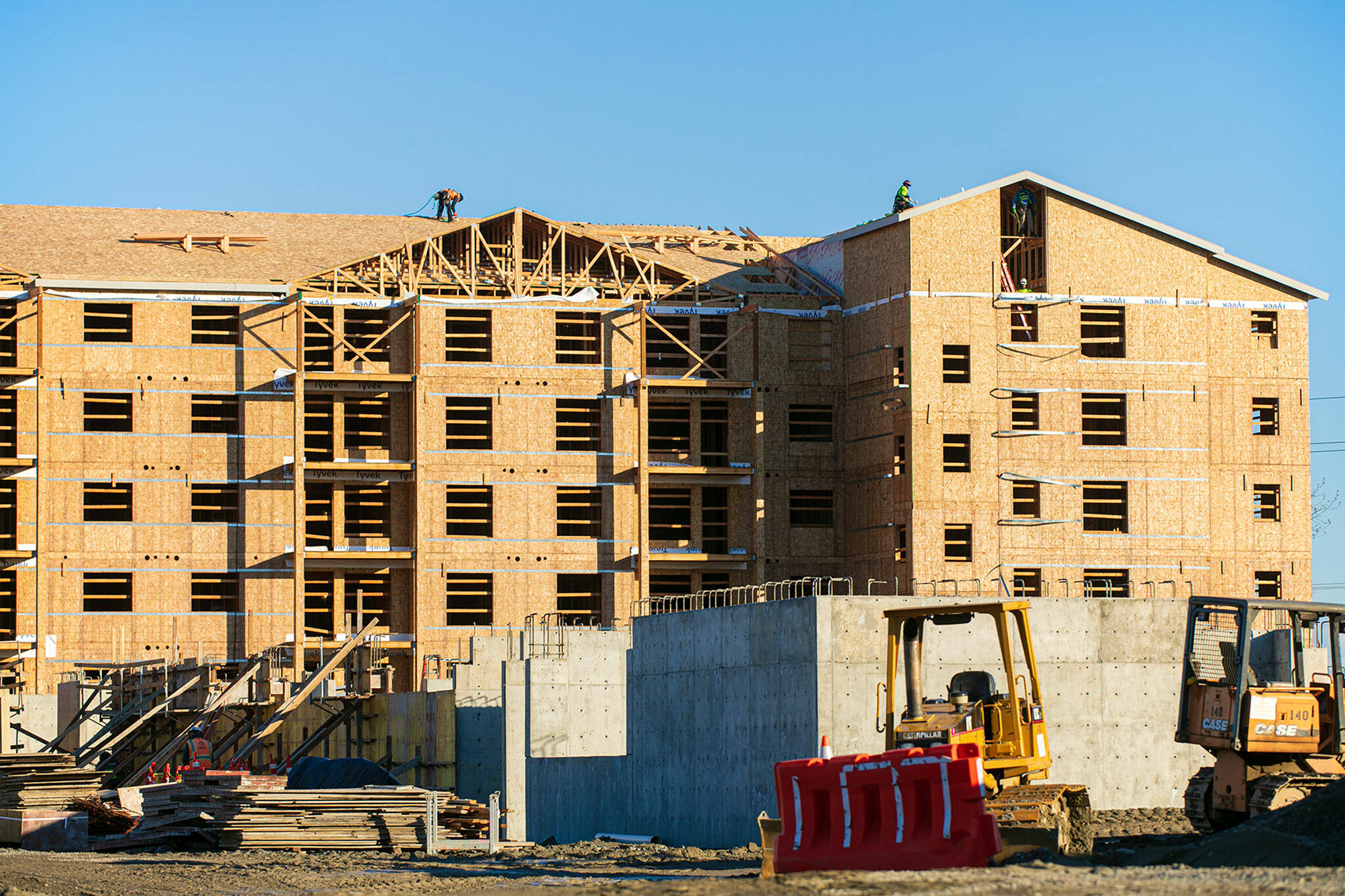By The Herald Editorial Board
Previously, the editorial board has compared the gulf between available housing and those seeking to rent or buy that housing as a cruel game of musical chairs, with far too few seats available for those desperate to sit.
In the ten years between 2010 and 2019, Snohomish County has added more than 106,000 residents to its population, but at the same time saw less than 34,000 owner-occupied homes and 12,600 rental units built, and the county could add another 120,000 more residents to its current population of 833,500 by 2035. Over roughly the same 10-year period median household income has increased 8 percent, while the costs for rent have increased 32 percent and home prices by 52 percent, according to figures from the Housing Authority of Snohomish County.
The solution — no surprise — is construction of a greater supply of housing, an increase “in chairs” that is underway in some Snohomish County communities, especially those from Everett south along the I-5 corridor. And there remain efforts to increase that availability even further by encouraging greater housing density in residential neighborhoods, particularly along existing and planned transit routes.
But more rural and suburban areas in the county and the state, where housing construction has fallen even further behind growth, have seen less relief for supply, meaning even higher costs for renters and homebuyers. Where rent costs have somewhat stabilized for the county’s larger cities, the changes in median rent have seen a 5 percent or more increase in Tulalip and north county communities, and a 10 percent to 11 percent increase in south county communities around Canyon Park, Bothell, Clearview and Echo Lake.
The highest percentage increases in rent over the last five years, statewide, have been in smaller cities and rural areas, Crosscut reported recently, particularly in Bellingham, Wenatchee and Walla Walla, with that scarcity revealing reports of renters faced with paying rental increases of hundreds of dollars more each month. At the least, those jumps in rent costs force some renters into paying far more than 30 percent of their income for housing, the level considered “affordable.” At worst, exorbitant rent increases can force some individuals, seniors and families to leave their homes, communities and jobs; and still others are sent into homelessness.
That statewide impact has prompted two pieces of legislation in the House that seek to stabilize rents, not by freezing rent costs, but by setting some limits on increases.
Both bills, House Bill 1388 and HB 1389, would limit rent increases during a 12-month period to the rate of inflation or 3 percent, whichever is greater, up to a maximum of 7 percent. Those limits would not apply to newer construction, specifically units built 12 years ago or earlier. As well, tenants could not be charged move-in fees or security deposits greater than one month’s rent.
Among differences in the bills, HB 1388 would apply to tenants in mobile home parks, while HB 1389 provides exceptions for landlords who charge higher rents if there have been recent improvements beyond basic maintenance or if complying with the cap on rent increases would cause significant hardship for the landlord. HB 1389 would also allow landlords to “bank” capacity if they didn’t seek the full increase allowed one year and wanted to seek it in the future.
Some landlords and property management companies testified during public hearings before the House’s housing committee, criticizing the legislation as rent control that would discourage the housing construction that is critically necessary. But other landlords spoke in support, saying the limits sought were reasonable and would not create a hardship for landlords or the rental market.
As long as there has been property to rent, landlords have borne the brunt of popular criticism as mustache-twirling villains. With or without the facial hair, there are landlords who do take advantage of renters and the dearth of housing supply to milk what they can out of properties, ignore maintenance or subject tenants to even worse. In truth, the majority of landlords, even as they are tarred with that brush, are responsible property owners offering a vital commodity to community members: a place to live.
In a fair rental market with ample housing for all who need it, that market would be strong enough to keep the Snidely Whiplash landlords in check. But much of the state and county cannot currently offer that fair market to renters. Placing a cap on the extent of rental cost increases, while offering fair exceptions to landlords, can keep people in their homes and support a healthy housing market.
Talk to us
> Give us your news tips.
> Send us a letter to the editor.
> More Herald contact information.

























